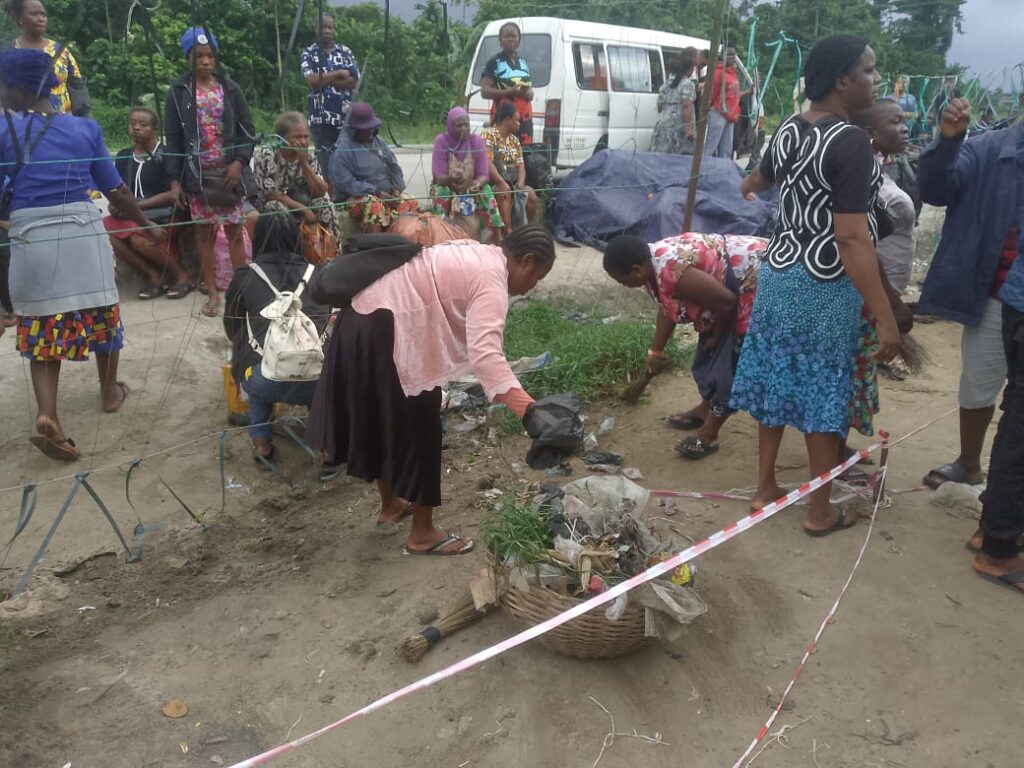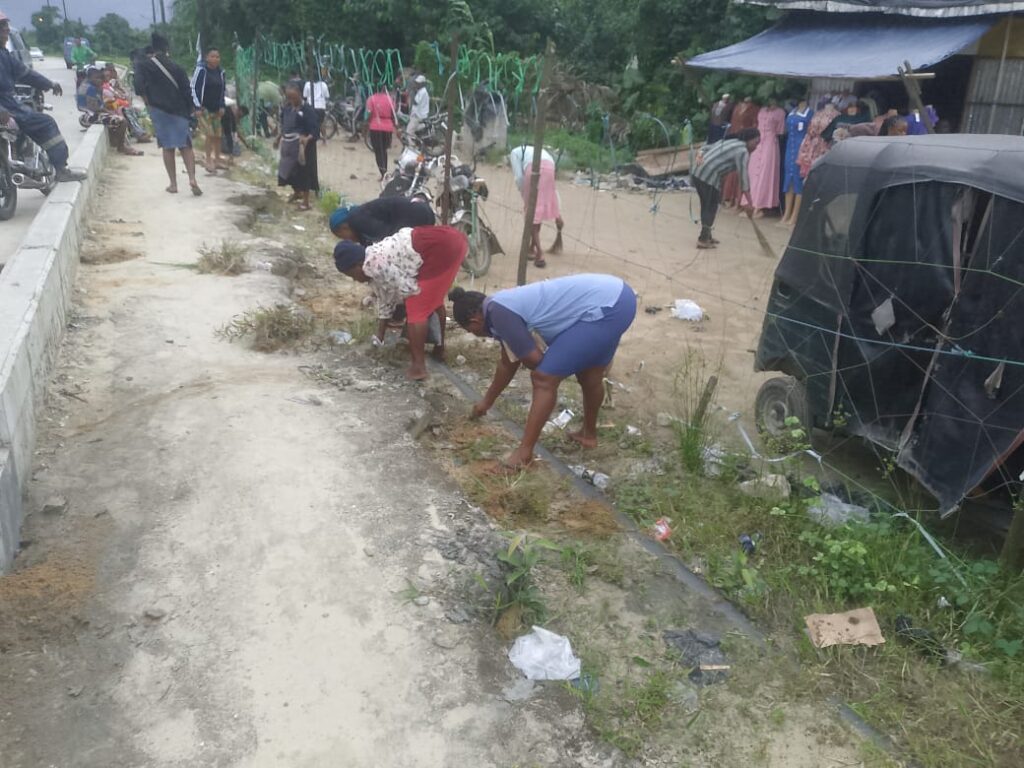Finima Youth Congress Leads Successful Market Sanitation Exercise at Agaja Market
Community Spirit Shines in Agaja Market Sanitation Drive
By Omie D. Brown, Special Correspondent
Finima, Bonny Local Government Area – A wave of community-driven action swept through Agaja Market on Thursday, 14 August 2025, as local traders and a dedicated environmental team joined forces for a comprehensive sanitation exercise. The initiative, spearheaded by the Finima Youth Congress (FYC) Environmental Committee, underscored a strong and ongoing commitment to public health, hygiene, and environmental sustainability within the Finima community and the wider Bonny Local Government Area.
The periodic clean-up, conducted between 8:00 a.m. and 10:00 a.m., was described as a resounding success, demonstrating the power of a united community. Led by the Public Relations Officer (P.R.O) of the FYC Environmental Committee, Omie D. Brown, and executed under the direct instruction of the FYC Director of Environment, the operation forms part of the FYC’s long-standing resolution to maintain a clean and healthy environment for both residents and visitors.




Market Women Lead by Example
The response from the market women was overwhelmingly positive. Guided by their own leadership, traders participated with enthusiasm, discipline, and a shared sense of responsibility. Witnesses reported a high level of compliance, with market women diligently clearing refuse, sweeping stalls, and ensuring that trading areas were spotless.
For two hours, the normally bustling market transformed into a hive of coordinated cleaning activities. Stalls were rearranged, waste was collected in an orderly fashion, and the drainage channels were cleared of debris. The scene reflected a community determined to set a high standard for cleanliness.
A senior market representative, who preferred to remain anonymous, summed up the general sentiment:




“We are so happy with how clean the market looks now. The FYC team has done a wonderful job in organising this, and it shows what we can achieve when we all work together.”
Shared Pride in a Job Well Done
Following the completion of the exercise, the atmosphere in the market was one of palpable satisfaction. Traders resumed their daily business against the backdrop of a cleaner, more welcoming environment. Many expressed their gratitude to the FYC Environmental Committee and the FYC Central Executive Council for initiating, enforcing, and overseeing the sanitation exercise.
The traders’ praise was accompanied by a pledge—one that holds significant meaning for the community’s environmental future. They promised to continue observing the sanitation routine regularly, even without external supervision. This commitment marks a shift from reactive clean-ups to a proactive, ingrained culture of cleanliness.
Such self-sustainability is a hallmark of successful community-led initiatives, and in this case, it signifies a long-term win for both the FYC and the people of Finima.
Calls for Urgent Infrastructure Support
Despite the upbeat mood, the market women also seized the moment to raise pressing infrastructural concerns. They issued a heartfelt appeal to the Sole Administrator of Bonny Local Government Area (LGA) and other stakeholders, urging immediate intervention in rehabilitating the market’s borehole.
A reliable supply of potable water, they stressed, is vital for maintaining hygiene in both food preparation and general market operations. The lack of a functioning borehole hampers these efforts and undermines the sanitation gains made during such exercises.
One stall owner put it plainly:
“A clean environment is not just about sweeping and tidying up; it’s also about having the basic amenities to support that cleanliness. We need clean water for our produce and for ourselves, and proper toilets are essential for public health. We hope the LGA and other stakeholders hear our plea and come to our aid.”
Alongside the call for water infrastructure, traders also highlighted the urgent need for functional, well-maintained toilet facilities. Without these, they warned, it will be difficult to sustain hygiene standards and prevent the spread of disease.
FYC’s Ongoing Mission for a Cleaner Finima
The FYC Environmental Committee has consistently demonstrated leadership in promoting cleanliness and environmental awareness in the Finima community. Regular market sanitation exercises, community-wide clean-up campaigns, and educational outreach form part of their broader strategy to foster a healthier and more sustainable environment.
Speaking after the exercise, Omie D. Brown reaffirmed the organisation’s vision:
“Today’s success shows what’s possible when a community comes together. Our goal has always been to instil a culture of environmental responsibility that will last for generations. The market women’s commitment to continuing this work, even without our direct supervision, is proof that change is taking root.”
A Model for Other Communities
The Agaja Market clean-up stands as a model for other markets and communities across the Niger Delta and beyond. It demonstrates that when local leadership, community members, and youth organisations work hand-in-hand, tangible improvements in public health and environmental quality can be achieved.
However, sustaining these results will require continued investment and collaboration. Stakeholders, both public and private, have an opportunity to reinforce the community’s efforts by addressing infrastructure needs such as the borehole and sanitation facilities.
Providing these amenities would not only safeguard public health but also serve as a powerful endorsement of the traders’ self-help initiatives. It would show that community-driven projects are not only acknowledged but supported at higher levels of governance.
Looking Ahead
The story of Agaja Market on 14 August 2025 is one of collaboration, resilience, and shared vision. It is about a community taking ownership of its environment, celebrating its achievements, and advocating for the resources it needs to sustain them.
As the freshly cleaned stalls reopened for business, the air carried more than the scent of fresh produce; it carried a renewed sense of pride and unity. The clean-up was more than an exercise—it was a declaration that environmental stewardship in Finima is not just a policy but a way of life.
Now, the challenge and opportunity lie with local authorities and stakeholders to respond to the market women’s plea, ensuring that this vision of a healthier, cleaner future becomes a permanent reality.
🖊️ Omie D. Brown
P.R.O – FYC Environmental Committee
For and on behalf of the FYC Director of Environment





You must be logged in to post a comment.